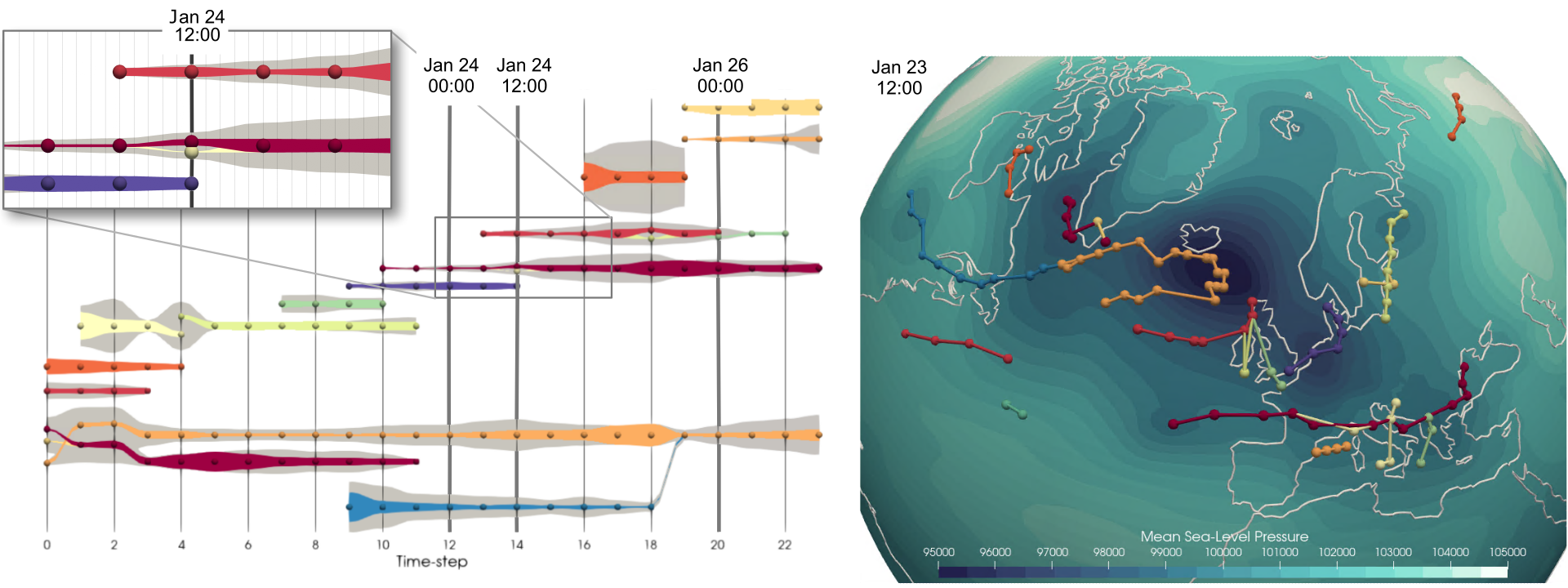Exploring Cyclone Evolution with Hierarchical Features
Emma Nilsson, Jonas Lukasczyk, Wito Engelke, Talha Bin Masood, Gunilla Svensson, Rodrigo Caballero, Christoph Garth, Ingrid Hotz
View presentation:2022-10-17T21:34:00ZGMT-0600Change your timezone on the schedule page
2022-10-17T21:34:00Z

The live footage of the talk, including the Q&A, can be viewed on the session page, TopoInVis: Session 2, Early Career Lightning Talks + Best Paper Awards .
Keywords
Human-centered computing—Visualization—Visualization design and evaluation methods; Human-centered computing—Visualization—Visualization application domains—Scientific visualization
Abstract
The problem of tracking and visualizing cyclones is still an active area of climate research, since the nature of cyclones varies depending on geospatial location and temporal season, resulting in no clear mathematical definition. Thus, many cyclone tracking methods are tailored to specific datasets and therefore do not support general cyclone extraction across the globe. To address this challenge, we present a conceptual application for exploring cyclone evolution by organizing the extracted cyclone tracks into hierarchical groups. Our approach is based on extrema tracking, and the resulting tracks can be defined in a multi-scale structure by grouping the points based on a novel feature descriptor defined on the merge tree, so-called crown features. Consequently, multiple parameter settings can be visualized and explored in a level-of-detail approach, supporting experts to quickly gain insights on cyclonic formation and evolution. We describe a general cyclone exploration pipeline that consists of four modular building blocks: (1) an extrema tracking method, (2) multiple definitions of cyclones as groups of extrema, including crown features, (3) the correlation of cyclones based on the underlying tracking information, and (4) a hierarchical visualization of the resulting feature tracks and their spatial embedding, allowing exploration on a global and local scale. In order to be as flexible as possible, our pipeline allows for exchanging every module with different techniques, such as other tracking methods and cyclone definitions.